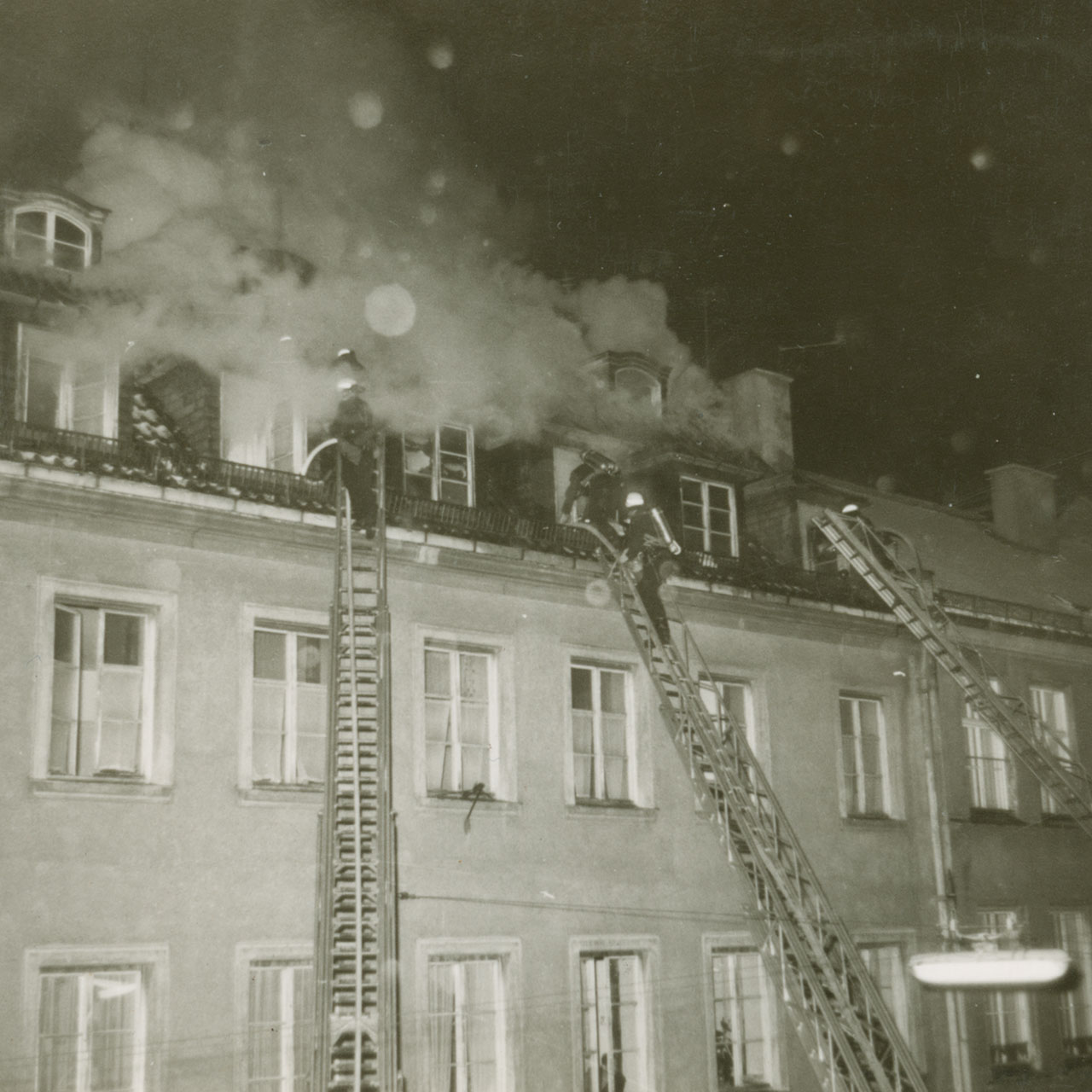To This Day:Perpetrator Unknown
The sixty-strong special commission set up by the Munich police force carried out its investigations in all directions—from residents in the building, known arsonists, foreign workers, and students (especially Palestinians), to political groups ranging from the far-right to the far-left. There was no letter claiming responsibility.
In the end, the prime suspects were the so-called “Tupamaros Munich” and the “Aktion Südfront,” two groups of people which included later RAF terrorists and potential arsonists. A number of proven cases of arson and attacks with incendiary devices were ascribed to them—such as that on the Senior Prosecutor Wilhelm Lossos in Munich in summer 1969.
On November 9, 1969 the “Tupamaros West-Berlin” placed an explosive device in a Jewish community center in Berlin which was meant to explode during an event to commemorate the Kristallnacht—the Night of Broken Glass. Fortunately, the bomb that had been procured by a confidential informant of the intelligence service did not ignite.
Despite all the evidence, the circle of potential perpetrators responsible for the attack on February 13, 1970 could extend over a wide spectrum of ideological directions. This shows just how the antisemitic enemy stereotype has been retained, even after 1945, in the most varied of social milieus and groups.
In the case of the arson attack on no. 27, Reichenbachstrasse, no conclusive evidence has ever been found—while those with inside knowledge, sympathisers, accomplices and the perpetrator may even still be alive.
Your help is needed.
Decisive evidence was, however, never found. The perpetrator has not been identified to this day.
50 years later: Those with inside knowledge, sympathisers and the perpetrators may still be alive. Break your silence!

